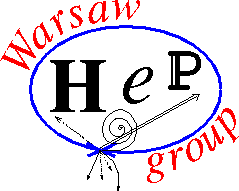SEMINARIUM FIZYKI WIELKICH ENERGII
Dnia 28 marca (piątek) o godzinie 11:30, w sali B2.38 odbędzie się seminarium, na którym zostanie wygłoszony referat pt.:
„Enhanced optical amplification structures for Dark Matter searches”
Referuje: André Filipe Cortez (AstroCeNT)
The development of radiation detectors has seen significant advancements over the past decades, particularly in those relying on electroluminescence. Optical time projection chambers (OTPCs) have become the preferred choice in the field of direct dark matter searches (more specifically in WIMP searches), having also been considered for neutrino experiments. Dark matter experiments examples include XENON, LZ, DarkSide, and CYGNO where directional information is expected to be explored. Moreover, these detectors have found applications in nuclear physics, such as in the study of ββ0ν decay (NEXT) and 2p-decay and related processes (Warsaw-TPC).
Even though significant progress has been observed in the development of these detectors since the first works in the 1960s, the optimization of the light collection efficiency remains an important concern. Historically, these structures were mostly made up of meshes or conventional micro-pattern gas detectors (MPGDs) designed for avalanche mode and working mainly in quenched gases.
Given the expected scalability of most of the aforementioned detectors, light production and collection pose unique challenges. Dealing with alignment, and the use of meshes or wires spanning large areas presents practical limitations.
In most cases, relying on scintillation originated in charge avalanches will affect not only the energy resolution but also impact the attainable spatial resolution. In addition, the use of lenses, while enabling the reduction of the number of optical sensors required to read large areas and improvement of the optical gain, may limit the spatial resolution attainable, introducing undesirable optical effects (e.g. aberrations). Nevertheless, it is important to consider techniques that can mitigate potential adverse effects associated with the current amplification structures and readout.
In this talk, the challenges for improving the light collection as well as the minimization of the background in dual-phase TPCs resulting from spurious emission will be discussed. We will start with a brief overview of the evolution of electroluminescence studies, along with strategies to address some of the main challenges faced in the development of such detectors for Dark matter searches. Alternative structures, GEM-based, capable of providing higher optical gains without relying on avalanche multiplication, thus enhancing energy resolution and detector stability (while eliminating ion back-flow), will be presented.
Serdecznie zapraszamy
dr hab. Katarzyna Grzelak
prof. dr hab. Aleksander Filip Żarnecki

